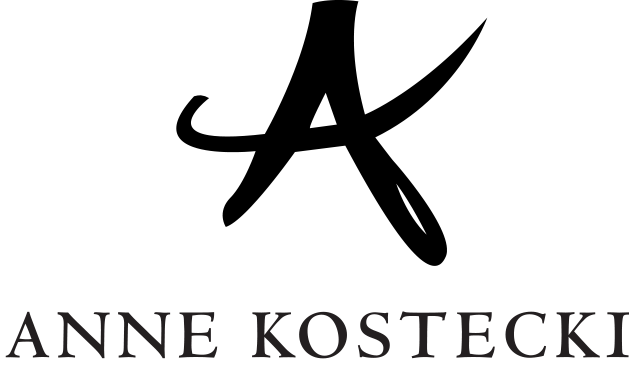Blog
How To Avoid Art/Design Scammers
by Anne Kostecki

Scammers are like the Greek monster Hydra: as soon as we discover a new scam and cut off its head, two more grow back. Ok, maybe that's dramatic, but my point is that scammers adapt, and they create new scams hoping to trap unsuspecting people. In my creative business, I've been contacted directly by scammers in 3 different methods.
I'm happy to say that none of these scammers have succeeded with me. I am a skeptical and cautious person by nature, and I have a solid policy in my business that I do not start work without a deposit first.
This is a policy I've learned from other freelancers and colleagues, and it has helped me immensely. Early in my career, I gave away free work at various jobs and felt drained and resentful. Eventually, I put my foot down and decided I wouldn't undercharge or give away extra work that was beyond the scope of the original project. I highly recommend you do the same, in whatever job you may have!
Anyway, let's get to it.

1. Read all of your communications very carefully.
All of the scammers that have contacted me have done so either via email or a direct message (like an Etsy direct message). I'm sure some art scammers are still calling artists on the phone, but that is much more difficult and time-consuming, so the majority of scammers contact artists via email. Whenever you receive an email from a new customer, ask yourself:
- Does this sound like my typical customer?
- Do they mention who/where they heard your name for this project?
- Are they clear with their project objectives (budget, deadline, etc)?
- How is the tone of the email? Friendly, demanding, abrupt?
- Do they seem to be in a hurry, or need an answer from you immediately?
Respond as if you were talking to a normal customer. It's often not clear you're talking to a scammer until the second or third communication. But the next tip below is often a dead giveaway...

2. Look out for spelling, grammatical, or syntax errors.
I'm not saying that a customer with grammar issues is automatically a scammer; but I've noticed that it's heavily correlated. A lot of scammers are not based in the United States (although some are), and English is not their first language. So, if spelling mistakes jump out at you (like they do for me), then this may be a sign.
I've noticed syntax errors more often than spelling errors, however. A syntax error is a mistake in using a language that involves organizing words and phrases that don’t make sense. It can be as simple as a misplaced comma, or a completely fractured sentence. If you read the email aloud and it sounds "off," then that might be a sign of a scammer.
I've noticed that the tone of the email may be aggressive or rude as well, such as "come back to me ASAP with an answer," or "let me know a price," when the customer has not revealed any details about the project. If your gut tells you something is off, then it very well may be.

3. Never start work on a project until you have a deposit.
This is super important! This is a policy I would recommend every artist or freelancer hold dearest. It is too easy for someone to take advantage of you if you do work without any sort of deposit. I was guilty of this early in my career, sadly. Don't risk doing work for free!
Another tip: put all of your work on a proof template, or downgrade the quality so that your sketches cannot be stolen. Unfortunately, I had someone pay a deposit, then steal one of my sketches before the final file was complete. It was an important reminder to myself to always put my art on a template with the word "PROOF" written across it so it wouldn't be easy to steal!
If the potential customer is a scammer, they will most likely not give you any sort of deposit. In fact, as soon as you bring it up, they will do one of two things:
- Disappear forever
- Or talk about some convoluted, complex method of payment that is not instantaneous.

4. If you have pushback on method of payment, that's a red flag.
This is it; this is where you get 'em. In my experience, every scammer has refused to use PayPal, Venmo, or any other electronic method of payment. They may even be emailing you to see if they can pay for something from your Shopify or Etsy or other e-commerce platform but have an excuse why they can't use the normal checkout feature.
I've heard some interesting things: that they are buying a lot of art for a relative who lives in a remote village (and can't use normal shipping carriers, therefore I need to fill out a customs/taxes/duties form), that they are sending the art as a gift and need to have a third person write me a check and mail it, or that they would prefer to mail the payment rather than make an electronic payment.
My advice is: never accept payment by mail. There is too much room for error, and you absolutely cannot trust a stranger to send you a check in the mail. I've had issues with my own relatives sending payment in the mail; in that mail carriers aren't 100% reliable, and it's very easy to lose checks. If you think to yourself, "It would be easy for this person to get away without paying," then it probably is.
If a customer cannot make an electronic payment (which means that they cannot shop online at all...questionable), then I would insist on meeting in person and giving you cash or a check that you must deposit before you begin work. If it's a scammer, that's when they'll disappear.

5. Watch out for sophisticated tricks.
If you watch Mark Rober's YouTube channel, then you might have seen his pranks on scammers. In his videos, he gets into great detail about how sophisticated these scammers are. They are almost corporate-level operations, with many levels of people working together covering their tracks so that the operation remains covert.
Not that I've seen very complex scammers like this trying to steal from lowly me, but I have noticed that scammers seem more like real people recently. Their Gmail account may have a normal name and photo, their emails may be error-free and friendly, and they may have a project proposal that actually makes sense. I can even imagine a scenario where a scammer "pays" an artist with a check, but claims the amount was a mistake, then hacks into their computer while sharing the screen and take money out of their real bank account.
Either way, I would keep your eyes sharp for any sophisticated tricks. Definitely don't do any work before getting a deposit. And make sure your steal-proof your process, so potential customers don't take advantage of you. Don't let the scammers win.





0 comments